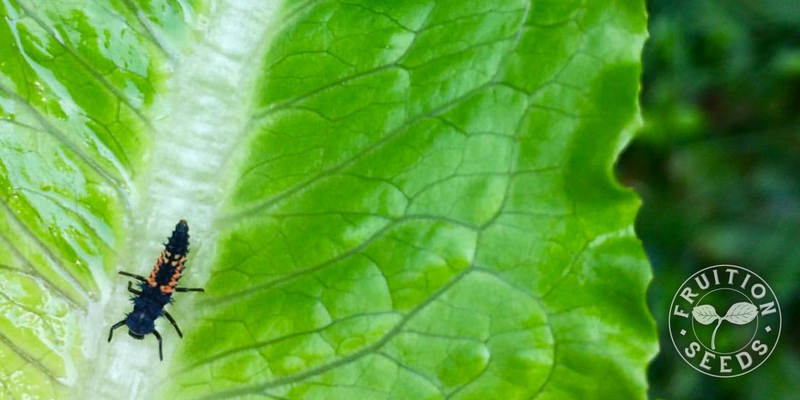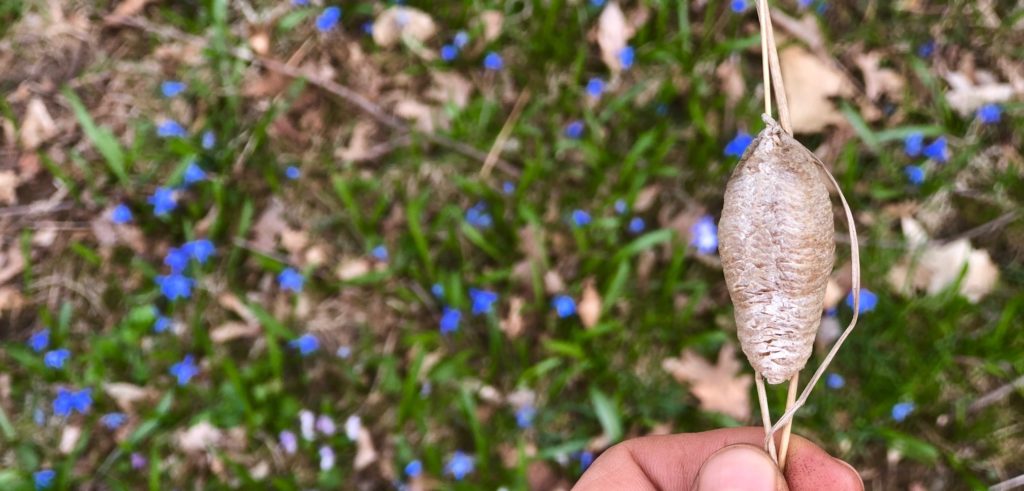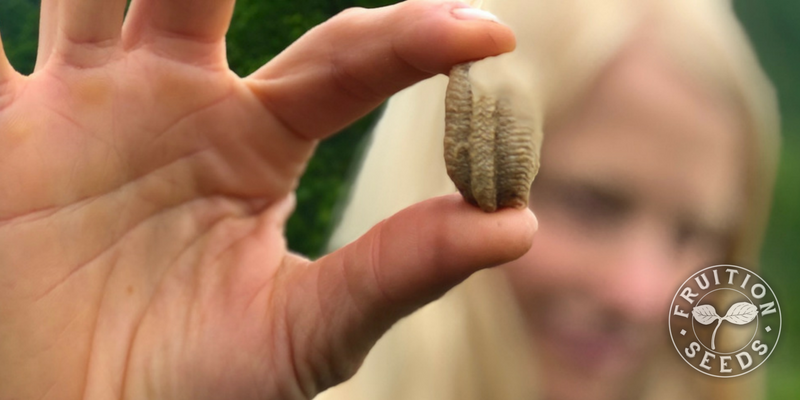As a child and to this day, praying mantis delight me instantly when I find them in the garden. Their unlikely and adept bodies, their incredible adaptations & their uncanny camouflage are absolutely astonishing. I’ll stop what I’m doing, every time, to watch them for minutes on end, spellbound by their captivating grace.

Can you find the praying mantis on the sage, beside Queen Sophia marigold, in front of Pancho?
When we rhapsodize poetic about beneficial insects, the charismatic praying mantis is often celebrated alongside ladybugs, bees and butterflies.
Friends, I love praying mantis.
And let’s be clear.
Far from a pest insect, praying mantis (Mantis religiosa) is nonetheless at the bottom of the list of ‘beneficial insects’ in your garden.
Here are the three essential things to know about praying mantis:
1. Praying mantis are generalists.
When it comes time to eat, praying mantis are generalists. They’ll voraciously devour any arthropod insect they can catch. So yes, they’ll devour your voracious thrips and dine on your exploding aphid populations. But they’ll happily eat your darling ladybugs and lacewings, who are also dining on your aphids. In the insect world, generalists eat anything that makes its way to their mouth.

Ladybugs eat aphids voraciously as larvae (above) as well as adults.
As specialists, ladybugs and lacewings dine almost exclusively on specific species. When specialists devour pest insects we’d prefer to not have in our gardens, like aphids, we call them ‘beneficial’ insects. Rather than specialists, praying mantis are opportunist generalists: Beneficial for sure, though not nearly as reliable in reducing pest species as the specialists. Also:
2. Praying mantis reproduce once each season.
In the fall, a female praying mantis lays her egg case clinging to a strong goldenrod stalk or a protected wall. In early summer, one to two hundred manti emerge. Praying mantis produce one generation each season.

Nothing else is quite like the egg case of a praying mantis!
Many pest insects (like aphids, Colorado potato beetles, cucumber beetles) will produce several generations per year. Beneficial insects like ladybugs, lacewings, braconid wasps also produce several generations per year. This allows their population to increase as prey (your garden pest) populations increase, which is essential for a healthy, abundant garden.
Sad truth: Since praying mantis are generalists, eating pest and beneficial insects alike, and don’t reproduce fast enough to respond to population spikes in pest insects, they’re considered of ‘negligible value’ in terms of ‘biological control’ in your garden.
But before you succumb to dismissing our beloved praying mantis, remember:
3. Praying mantis indicate a healthy, thriving garden.
Diversity is the most important thing you cultivate. If you have praying mantis, you have a healthy garden ecosystem. Don’t sweat their ‘negligible value’ as a ‘beneficial insect’: That is like saying the salt isn’t part of the food pyramid, so who needs it? Salt makes the meal. Praying mantis make the garden.
And if you want to witness one of the most marvelous spectacles on earth, find yourself a praying mantis egg case.

Finding an egg case of praying mantis is better than an Easter egg and there is no mistaking them. In autumn, females lay 100-200 eggs in a foam that quickly becomes quite solid, called an ootheca, protecting her eggs through the winter. I most often find them on solid surfaces like rocks, cinder blocks and barn walls, as well as strong plant stems, especially goldenrod. The following season, when air temperatures average 60, (mid-June, here in the Finger Lakes), the young will emerge one-tenth of their adult size. They eat every animal in sight they can catch, including each other. Witnessing the emergence of all those tiny mantids is a spectacle worth waiting for; each year, we tuck one in a mason jar and can’t help but hold our breath as we wait.

One of the praying mantis egg cases we’ll send out to our newest Flourishers!
Finally, a few fun mantis facts:
– Praying mantis vision perceives dramatic depth and color, their triangular heads have remarkable compound eyes have over 10,000 tiny facets sensing light and movement.
– Our praying mantis is but one of over 2,400 species of mantis worldwide. The most mantid diversity is found in the tropics.
– Praying mantis are not native to North America, though they’re far from invasive. Imported from Europe for agricultural benefits in the 1800s, research has since shown there are way more beneficial species to encourage than mantis. That being said, they’re not displacing natives. When does an immigrant become native? We may never know. In the meantime, welcome them with open arms
Sow Seeds & Sing Songs,

and the Many Beings of Fruition
